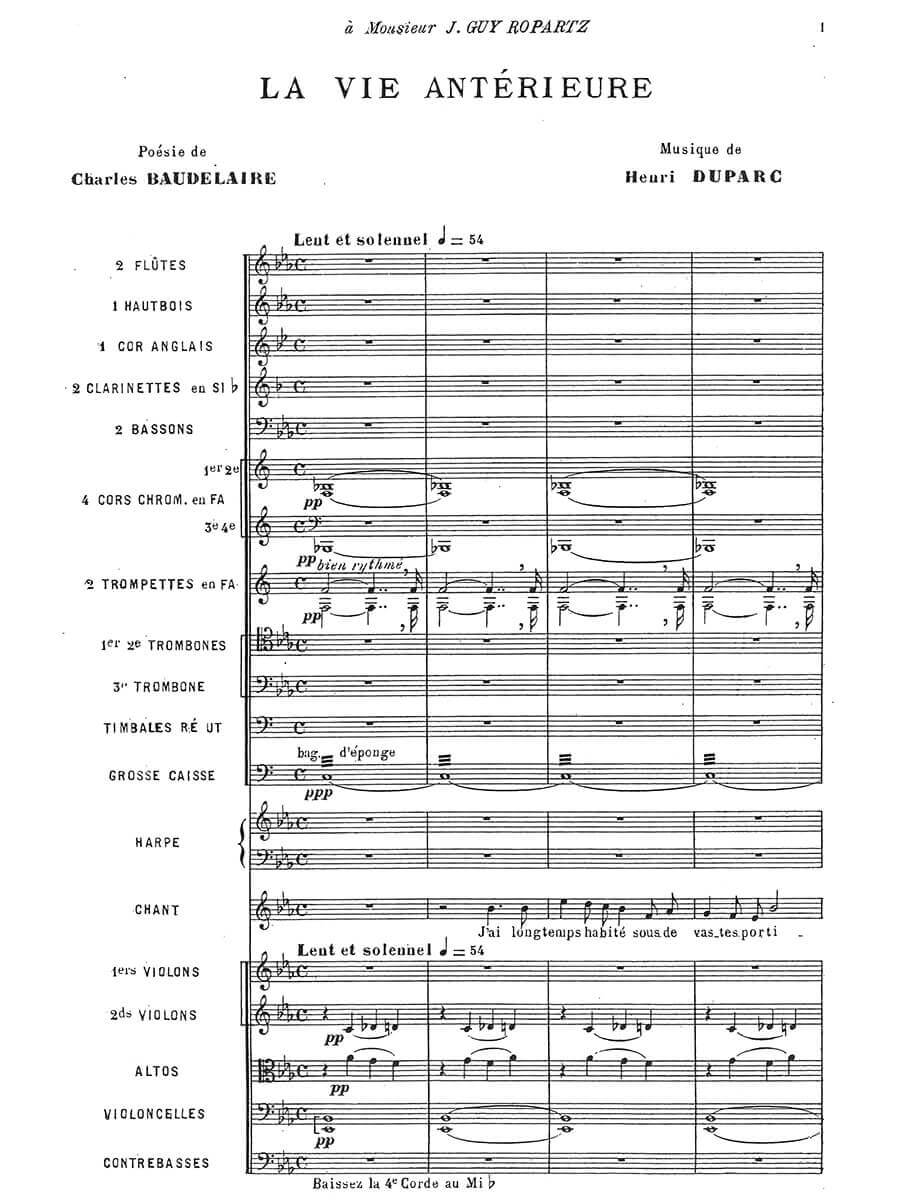La Vie antérieure for voice and orchestra (+ original version for voice and piano)
Duparc, Henri
18,00 €
Preface
Henri Duparc
(b. Paris, 12 January 1848 – d. Mont-de-Marsan, 12 February 1933)
La Vie antérieure
for voice and orchestra
Songs with Orchestra
No fewer than eight of Duparc’s sixteen surviving solo mélodies exist in versions with orchestral accompaniment. Seven of them were published first with piano, and orchestrated only later. (The exception is La vague et la cloche, which was intended for voice and orchestra from the outset.) When we consider that, for example, Duparc’s near contemporary, Gabriel Fauré, orchestrated only four of his own songs (Chanson du pêcheur/Lamento, En prière, Clair de lune and Les Roses d’Ispahan), Duparc’s efforts in this direction are impressive.1 However, a remark by the composer in a letter to his friend, the Bordeaux-based wine merchant and musician Paul Charriol, on 23 June 1906 strongly suggests that Duparc regarded all his piano accompaniments as but a preliminary stage in the realization of an ultimately orchestral conception: „I am not forgetting your excellent accompanist, to whom I am infinitely grateful because he has understood so well that my accompaniments are a symphonic and orchestral texture that is at one with the voice, and not piano pieces intended for performance by a virtuoso pianist while one sings. You cannot imagine the difficulty I often have in making this understood, and I haven’t always succeeded in doing so; thus I was delighted the other day to see, right from the opening bars, that not only had your accompanist comprehended this by himself, but also that he was visibly seeking to reproduce different orchestral timbres on the piano.“2
An equally surprising passage on the subject had appeared several years earlier, in a letter from Duparc to the pianist Francis Planté written early in 1894: “If only I knew how to write for the piano … but I’m completely unable to do so, and cannot even write the piano accompaniments for my songs directly. First of all I have to make an abridged version for orchestra, then a sort of piano reduction of it.3
Duparc’s songs were mainly published in three collections, all issued in Paris:
– A collection of five songs, published by Flaxland in 1869
– A collection of eight songs, published by Baudoux in 1894, with a revised version from the same publisher issued in 1902 that included four more titles (Soupir, Chanson triste, Elégie and La Vie antérieure).
– Thirteen songs, published in 1911 by Rouart, Lerolle, and advertised as a “Nouvelle édition complète”. The song missing from Baudoux’s 1902 collection was Au pays où se fait la guerre.
Read full preface > HERE
Score Data
| Edition | Repertoire Explorer |
|---|---|
| Genre | Choir/Voice & Orchestra |
| Size | 225 x 320 mm |
| Printing | Reprint |
| Pages | 36 |
